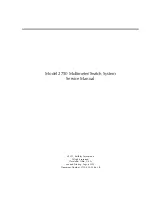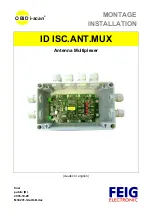
Making a Burst of Measurements
This program makes 100 DC voltage measurements on the terminals
connected to the multimeter’s faceplate.
10
!
Dimension a computer array to store the readings.
20
DIM Rdgs(1:100)
30
!
Clear and reset the multimeter.
40
CLEAR 70903
50
OUTPUT 70903;"*RST"
60
!
Configure the multimeter for DC voltage measurements. Take a burst of 100
70
!
readings, store the readings in mainframe memory until all readings are
80
!
taken. Fetch the readings from memory and place them in the output buffer.
90
OUTPUT 70903;"CONF:VOLT:DC"
100
OUTPUT 70903;" SAMP:COUN 100"
110
OUTPUT 70903;"INIT"
120
OUTPUT 70903;"FETCH?"
130
!
Enter the readings into the computer. Display selected measurements.
140
ENTER 70903;Rdgs(*)
150
PRINT Rdgs(1),Rdgs(50),Rdgs(100)
160
END
Comments
•
CONFigure
sets a burst consisting of one measurement. The
SAMPle:COUNt
command is used to set a burst of measurements
greater than one. Up to 16,777,215 measurements can be specified
with
SAMPle:COUNt
.
•
When
INIT
follows
CONFigure
, the readings are stored in mainframe
memory.
FETCH?
retrieves the readings and places them in the
output buffer once all measurements are taken. Replacing
INIT
and
FETCH?
with
READ?
returns the readings directly to the output
buffer. Readings should be stored in memory first, rather than
returned directly to the output buffer, when measurement speed is
critical.
•
Readings are returned directly to the multimeter’s output buffer, or
are stored in mainframe memory on in memory shared by the
VXIbus system. The total number of readings which can be stored
depends on the amount of memory available. Each reading stored
will consume four bytes of memory.
•
A burst of measurements (set by
SAMPle:COUNt
) can also be made
when scanning a single channel.
Chapter 3
Using the HP E1326B/E1411B Multimeter 43
Artisan Technology Group - Quality Instrumentation ... Guaranteed | (888) 88-SOURCE | www.artisantg.com
















































